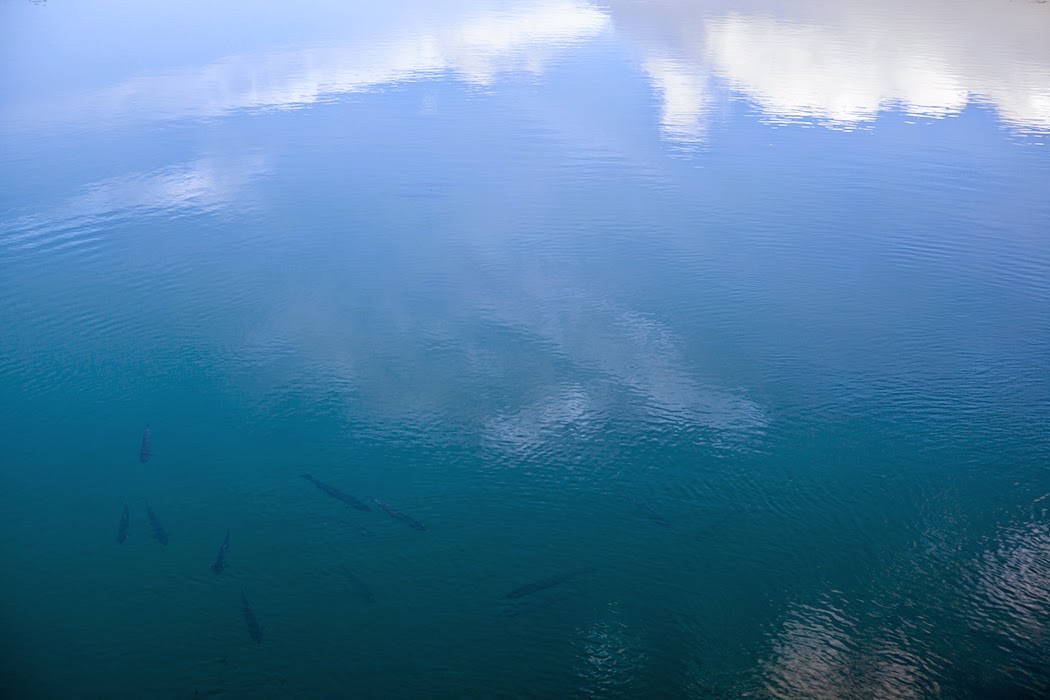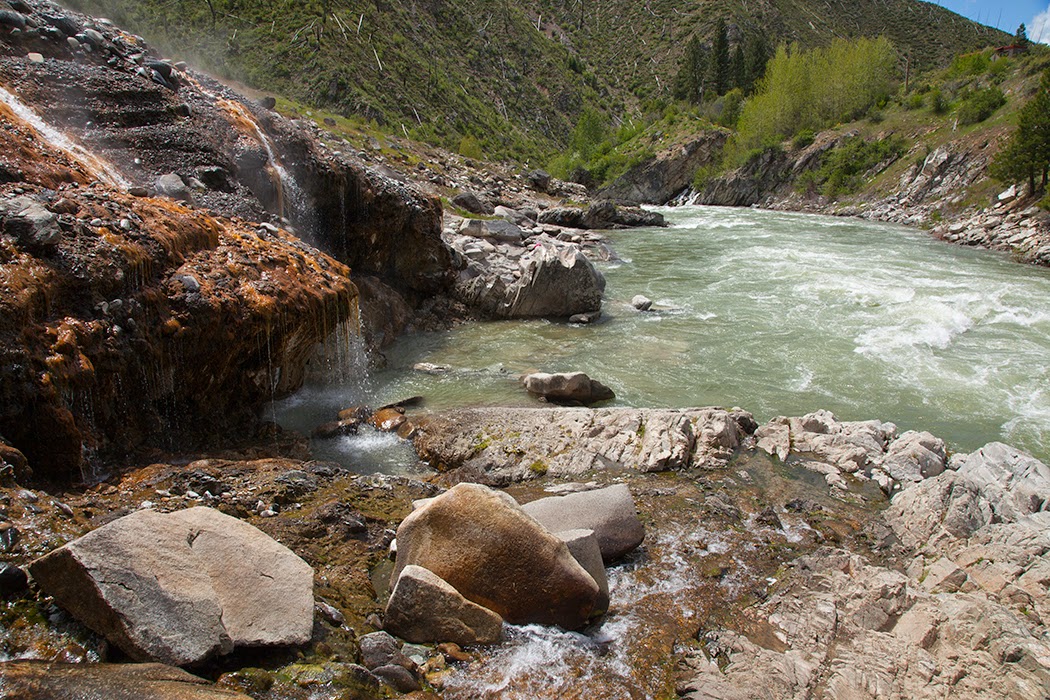Malad Gorge, c. 1970s
I stopped here, collected my first sagebrush, and stared at the canyon in the mid afternoon sun earlier this month after crossing the Idaho border. It was the first revisited location this summer, a spot near the interstate to stretch weary legs. There is more graffiti on the bridge now but there is a paved path on the other side which brought me to this vista below. I did not see a dead calf in the rapids - an event that was seared into my retina at the age of fifteen - however, I did search for anything out of the ordinary (and did not find it).
Boise River, c. 1970s
Every photograph taken on my phone or DSLR in the past month of the Boise River along the Greenbelt, evokes memories of the slide shows my brother and I saw of our hometown as a child. In May, there is no evidence of ice, only the high, quick moving waters of melted snow from the mountains as depicted in previous blog posts.
The following four photographs are of the next destinations: Lake Pend Oreille, Idaho and Alberta, Canada. Every summer, often multiple times with the other parent, we journeyed to Northern Idaho. It is a place my parents love, passed down to the next generation. My brother and I do not travel there as much as we used to (hm... eight years ago for me and who knows for Javy) but its prominence in our youth defines much of what we love about the Western landscape today. Speaking of adoration, I appreciate age turning these slides cyan given the context of this current series. I may be disappointed when the water isn't this "blue" in real life.
Sunnyside, Lake Pend Oreille, Idaho, c. 1978
Cape Horn Road, Lake Pend Oreille, Idaho, c. 1970s
Lake Pend Oreille, Idaho, c. 1974
Jasper National Park, c. 1968
This year marks my first excursion into Alberta, Canada. I have desired to visit glacier melt for decades and it is my mother's photograph above that introduced me to this phenomenon. Little did we know about global warning at the time, while snacking on popcorn looking at my family's history with water on slide shows in the dark. This may be one of the most meaningful locations of the series, particularly since it is one of three locations on my list that I have never seen. I have no history of this location, only its image.




















































